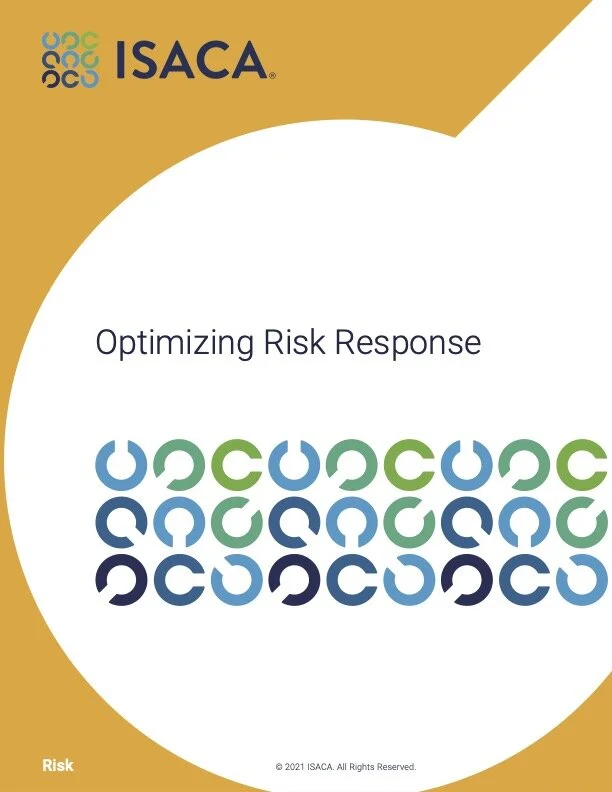ISACA’s Risk Response Whitepaper Released
Photo by Marc-Olivier Jodoin on Unsplash

I recently wrapped up a true labor of love that occupied a bit of my free time in the late winter and early spring of 2021. The project is a peer-reviewed whitepaper I authored for ISACA, “Optimizing Risk Response,” released in July 2021. Following the whitepaper, I conducted a companion webinar titled “Rethinking Risk Response,” on July 29, 2021. Both are available at the links above to ISACA members. The whitepaper should be available in perpetuity, and the webinar will be archived on July 29, 2022.
The topic of risk response is admittedly old and has been around since the first technology, ERM, and IT Risk frameworks. Framework docs I read as part of my literature review all assumed qualitative risk analysis (e.g., red/yellow/green, high/medium/low, ordinal scales). Previous writings on the subject also guided the practitioner to pick one response option and move on to the monitoring phase.
In reality, risk response is much more complex. Furthermore, there’s much more quantitative risk analysis being performed than one would be led to believe by risk frameworks. Once I started pulling the subject apart, I found many ideas and opportunities to optimize risk response and management. I did my best to avoid rehashing the topic, instead focusing on the use of risk response to align with organizational strategy and identify inefficiencies.
I had two distinct audiences in mind while researching and writing the paper.
First is the risk manager. I reflected on all the conversations I’ve had over the years with risk managers who feel like they’re on a hamster wheel of mitigation. An issue goes on the risk register, the analyst performs a risk analysis, assigns a color, finds a risk owner, then lastly documents the remediation plan. Repeat, repeat, repeat. There’s a better way, but it requires a shift in thinking. Risk management must be considered an essential part of company strategy and decision-making, not an issue prioritization tool. The whitepaper dives into this shift, with tangible examples on how to uplevel the entire conversation of organizational risk.
The second audience is the consumer of risk data: everyone from individual contributors to the Board and everyone in-between. In most risk programs, consumers of risk data are settling for breadcrumbs. In this whitepaper, my goal is to provide ideas and suggestions to help risk data consumers ask for more.
If this sounds interesting to you, please download the whitepaper and watch the webinar. I strongly encourage you to join ISACA if you are not a member. ISACA has made a significant investment in the last several years in risk quantification. As a result, there are invaluable resources on the topic of risk, including a recent effort to produce whitepapers, webinars, books, and other products relating to cyber risk quantification (CRQ).
As usual, I am always interested in feedback or questions. Feel free to leave them in the comments below.
Resources:
-
“Optimizing Risk Response” | whitepaper
-
“Rethinking Risk Response” | webinar
*** This is a Security Bloggers Network syndicated blog from Blog - Tony Martin-Vegue authored by Tony MartinVegue. Read the original post at: https://www.tonym-v.com/blog/2021/8/16/isacas-risk-response-whitepaper-released





